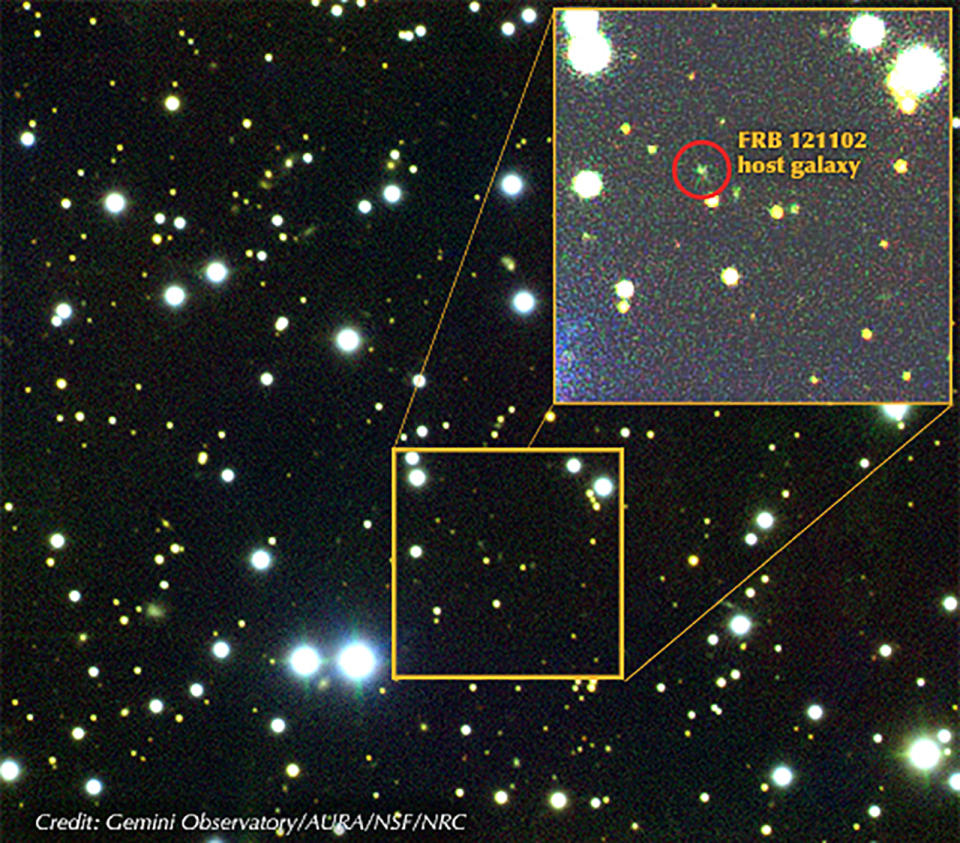Scientists trace a cosmic radio burst to its home galaxy
The discovery could shed more light on the nature of the universe.

Fast radio bursts in space have confused the astronomy community for years. What causes them, and where do they come from? At last, researchers are getting some answers. For the first time, scientists have traced one of these bursts back to its home galaxy. They first used the Karl G. Jansky Very Large Array radio telescope to pinpoint the object's exact location, and then used the Gemini North telescope to create an image of that patch of sky. The most surprising part isn't how they did it, though -- it's where the radio blasts are coming from.
The team narrowed down the source to FRB 121102, an object in a dwarf galaxy (it's less than a hundredth the mass of the Milky Way) over 3 billion light years away. In theory, bursts are more likely to come from large galaxies, where the sheer number of stars increases the chances of neutron stars sending out beams of electromagnetic radiation. Clearly, that isn't always the case. But what's causing it?
The galaxy is relatively young and forming stars quickly, so it's possible that the bursts are linked to young neutron stars. Alternately, the bursts could be the product of gamma ray bursts or hypernovae (very large supernovae) that tend to occur in dwarf galaxies. Whatever the cause, the successful discovery is important. If researchers can repeat their achievement, they'll have a better chance of identifying the nature of these bursts. That, in turn, could explain more about the lifecycles of galaxies and the nature of the universe.

